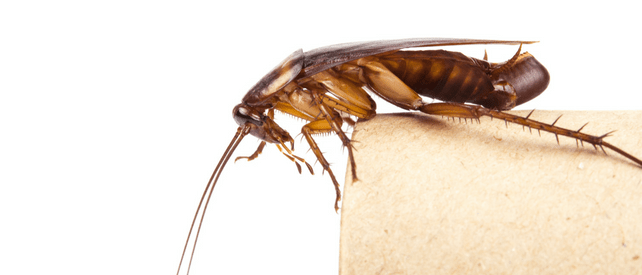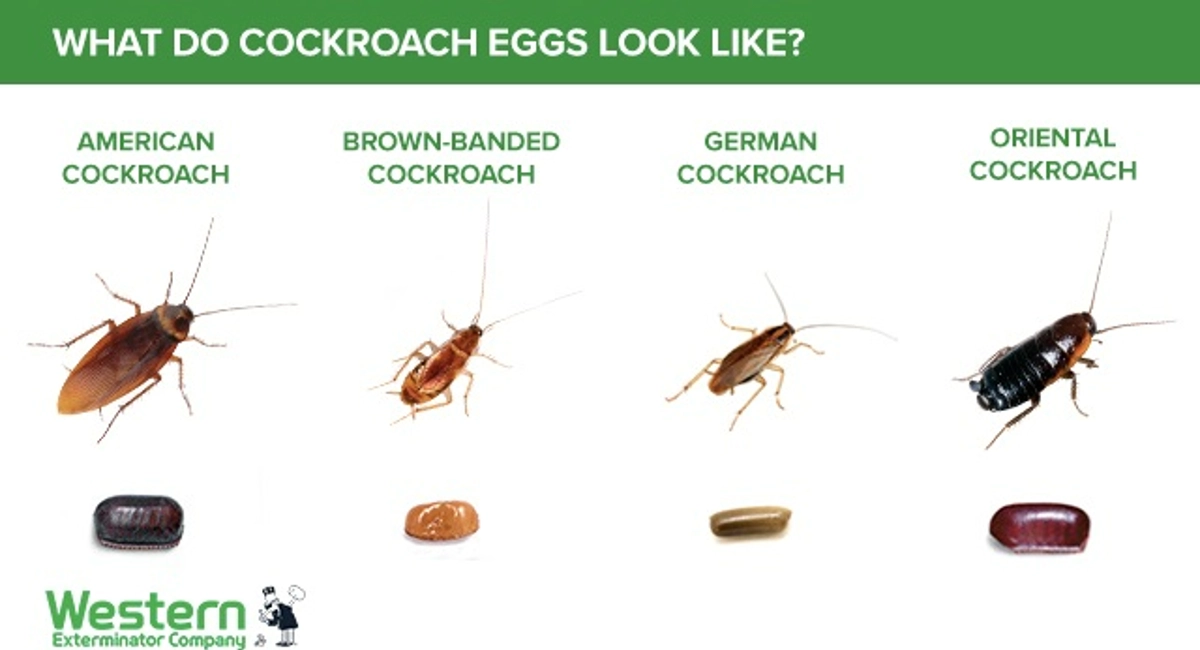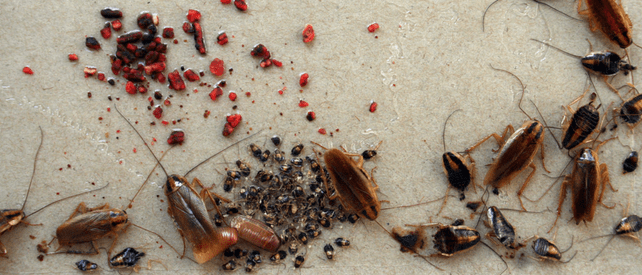Cockroaches typically lay eggs every 3-4 weeks. A female cockroach can produce multiple oothecae during her lifetime.
Cockroaches are among the most persistent pests we encounter in our homes and environments. Their adaptability and reproductive speed make them infamous for infestations. Understanding the breeding cycle of these resilient insects is essential for effective pest management. Some species may even lay eggs as often as once a week, depending on environmental conditions and food supply.
Their oothecae, or egg cases, contain numerous eggs that can hatch into nymphs which will then progress into adulthood. This rapid reproduction cycle makes it critical to address roach problems promptly to prevent a small issue from becoming a full-blown infestation. Knowing how frequently cockroaches lay eggs helps in devising strategies to combat the pest’s growth and spread.
Cockroach Reproduction Mysteries
Unveiling the reproductive secrets of cockroaches reveals a world of intrigue. These resilient pests have earned a reputation for their survival skills. Understanding the frequency and conditions under which they lay eggs is crucial for effective pest control.
Rapid Multiplication Rates
Cockroaches reproduce quickly, which is why they are notorious for infestations. One female can produce numerous egg cases, each filled with dozens of eggs. These cases are known as oothecae.
- Females lay one ootheca every few weeks, ensuring a consistent flow of new roaches.
- A single ootheca can contain up to 50 eggs, culminating in a high population growth rate.
- Within a few months, these hatchlings can mature into adults, continuing the cycle.
Factors Affecting Egg-laying Frequency
Various elements influence how often cockroaches lay eggs. Let’s inspect these factors:
- Species: Each species has its own reproductive schedule. Some lay more often than others.
- Environment: Ideal conditions include warmth, humidity, and access to food. Roaches breed more in such environments.
- Resources: With ample food, cockroaches will reproduce more frequently. Scarcity can slow their rate.
Take for example the German cockroach. It lays an ootheca about every six weeks. This species thrives especially well indoors, leading to fast infestations.
| Species | Oothecae Frequency | Eggs per Ootheca |
|---|---|---|
| German Cockroach | Every 6 weeks | Up to 50 |
| American Cockroach | Every Month | Up to 16 |

Credit: www.chemfreepestandlawn.com
Egg-laying Habits Of Cockroaches
Cockroaches are notorious for their survival skills, which include a high reproduction rate. Understanding their egg-laying habits is crucial for controlling infestations. In this section, we will delve into the fascinating world of cockroach reproduction and clarify how often these pests lay eggs.
An ootheca is a protective case cockroaches produce to encase their eggs. This hard shell safeguards the eggs from predators and environmental conditions. Each ootheca contains multiple eggs, arranged in a row.
Generally, once a female cockroach creates an ootheca, she will either carry it until the eggs are ready to hatch or deposit it in a secure location. This strategy ensures the safe development of the next generation.
- German roaches carry the ootheca until hatch time.
- American roaches tend to deposit it soon after formation.
Egg-laying frequency varies among different cockroach species. Some factors influencing this include the species’ lifespan, maturation process, and the environment.
| Species | Frequency of Laying | Eggs per Ootheca |
|---|---|---|
| German Cockroach | Every 3-4 weeks | 30-40 |
| American Cockroach | Every 6 weeks | 14-16 |
| Oriental Cockroach | Every 2 months | 16 |
For example, the German cockroach may lay an ootheca every three to four weeks, with each ootheca carrying up to 40 eggs. In contrast, an American cockroach lays fewer eggs per ootheca but may produce them more frequently throughout her lifetime.
It’s important to note that factors like temperature and food availability can also affect how often cockroaches lay eggs. Warmer temperatures and ample food supplies can lead to more frequent egg-laying.
Identifying Egg-laying Sites
Understanding the egg-laying habits of cockroaches is crucial in controlling their population. Female cockroaches lay multiple eggs throughout their lifetime. Locating these eggs helps limit future infestations. Let’s dive into the common egg-laying sites within your home.
Preferred locations in the homePreferred Locations In The Home
Cockroaches look for specific conditions when choosing egg-laying spots. These locations are usually warm, humid, and hidden areas. Here are some of their favorites:
- Kitchen Cabinets: Near food sources and away from frequent disturbance.
- Bathroom Cupboards: High humidity levels make perfect breeding grounds.
- Appliance Interiors: Spaces behind fridges or stoves are often undisturbed.
- Storage Boxes: Cardboard provides shelter and is easy for them to infiltrate.
Strategies For Camouflage And Protection
Cockroaches have evolved to protect their future offspring with great care. They use camouflage and protective strategies to secure their egg cases, known as oothecae. Here’s how they do it:
| Strategy | Description |
|---|---|
| Gluing Oothecae | Cockroaches often glue their egg cases onto surfaces, making them harder to find. |
| Dark Corners | Choosing dark, less-traveled areas allows oothecae to remain undisturbed. |
| Crevices | Small spaces offer physical protection from predators and human intervention. |
Removing clutter, sealing cracks, and regular cleaning can disrupt these strategies and reduce the risk of infestation. By identifying and eliminating these egg-laying sites, you can keep your home roach-free.
Lifecycle And Maturation
Understanding the lifecycle of cockroaches is crucial for controlling their presence. The journey from egg to adult reveals why these pests are so proficient at survival. Cockroaches are known for their remarkable reproductive capabilities, which contribute to their status as notorious household pests.
Developing From Nymph To Adult
After hatching, cockroaches begin life as nymphs. Unlike butterflies, their transformation does not involve a pupal stage. Development stages are called instars.
- Nymphs molt several times as they grow.
- They shed their exoskeleton, or exuviae, at each molt.
- Color and size changes occur until they reach maturity.
A nymph typically becomes an adult within a few months. This period can vary depending on the species and environmental conditions such as temperature and availability of food.
How Lifespan Affects Reproduction
The lifespan of a cockroach plays a pivotal role in its reproductive cycle. A longer life allows for more egg-laying events. Cockroaches can lay multiple oothecae, each containing many eggs.
| Species | Lifespan | Oothecae/Egg Case | Eggs per Case |
|---|---|---|---|
| German Cockroach | Approx. 1 year | 4-8 | 30-40 |
| American Cockroach | Approx. 1-2 years | 9-10 | 12-16 |
Lifespan varies by species, influencing reproductive potential. More extended lifespans result in higher numbers of eggs over time.
The Impact Of Environment
Cockroaches are notorious survivors, thriving in various environments. Yet, their reproductive habits, especially egg laying, are heavily influenced by their surroundings. Understanding these environmental factors helps in both anticipating and controlling infestations.
Temperature And Humidity’s Role
Temperature and humidity are pivotal for cockroach egg laying. Cockroaches prefer warm and moist places for breeding. Eggs need these conditions to develop properly.
- Optimal temperatures for egg laying range between 75°F and 86°F.
- High humidity levels aid in keeping the eggs from drying out.
| Temperature | Average Eggs Per Day |
|---|---|
| Below 75°F | Slower egg production |
| 75°F – 86°F | Optimal egg production |
| Above 86°F | Reduced egg viability |
Human Presence And Pest Deterrents
Cockroaches often enter homes seeking food and shelter. Human activity can either invite or deter these pests.
- Clean homes may discourage cockroaches from laying eggs.
- Pest deterrents like baits and traps can reduce egg laying.
Proper storage of food and waste management are crucial. They limit roach access to resources, leading to fewer eggs.

Credit: pestech.com
Population Control Challenges
Controlling the cockroach population poses significant challenges. This resilient pest has perfected the art of survival and reproduction. Female cockroaches lay eggs continuously, with one species capable of producing an ootheca (egg case) every six weeks. Each ootheca harbors numerous eggs, leading to a rapid and vast increase in population if left unchecked. This growth brings forth the pressing need for effective population control measures.
Natural Roach Predators And Their Effect
Mother Nature has her own pest control agents. Natural roach predators such as toads, beetles, and geckos often help maintain lower roach populations. Yet, in urban environments, these beneficial predators are less common, giving roaches free rein to multiply. In homes, the introduction of these natural predators isn’t practical, thus the battle against roaches becomes increasingly difficult.
Common Pest Control Mistakes
Where natural controls fall short, human intervention begins. Common pest control mistakes, however, can exacerbate the problem. Incorrect application of insecticides, not addressing the root of infestation, and underestimating the reproductive capabilities of cockroaches often lead to ineffective population control. These errors can result in a rebound effect where the cockroach population swiftly recovers and sometimes grows larger than before due to a lack of competition and ample resources.
- Using incorrect or suboptimal pesticides
- Focusing solely on adult roaches, ignoring eggs and nymphs
- Ignoring potential entry points and nesting sites within the home
Successful cockroach control hinges on a comprehensive approach. It includes proper identification, prevention techniques, and thorough treatment that targets all life stages of the pest. By understanding the prolific reproductive nature of roaches and the consequences of inadequate control methods, homeowners can better prepare to tackle this unwelcome intruder.
Myths Vs. Facts On Roach Reproduction
Cockroaches are notorious for their robust reproductive habits, sparking a plethora of myths regarding their egg-laying frequency. It’s crucial to separate fact from fiction to understand and manage infestations. Let’s dive into the real scoop on roach reproduction.
Debunking Common Myths
Many believe that cockroaches lay eggs endlessly, contributing to their image as indestructible pests. However, the reality is less exaggerated. Here’s a table breaking down some common myths:
| Myth | Fact |
|---|---|
| Cockroaches lay eggs daily. | Reproduction rate varies per species, but it’s not a daily event. |
| One roach means hundreds of eggs. | Each egg case, or ootheca, contains a certain number of eggs. |
| Roaches spread their eggs everywhere. | They typically choose hidden or protected areas for laying eggs. |
Surprising Truths About Cockroach Eggs
Roach reproduction is fascinating and reveals surprises about these persistent invaders.
- A female roach lays one ootheca which can contain dozens of eggs.
- Reproduction rates vary significantly between species.
- Some species can reproduce once and remain fertile for life.
- Egg laying occurs periodically, not constantly.
Contrary to popular belief, stomping on a roach will not release eggs. Also, while roaches prefer to lay eggs in secluded areas, it’s rare for them to use clothing or electronics as nesting sites.

Credit: www.westernexterminator.com
Prevention And Removal Tips
Discovering a cockroach infestation can be distressing. These persistent creatures multiply quickly and are adept at staying out of sight. Cockroaches lay eggs frequently, and if not managed, can turn a single sighting into a full-blown invasion. Effective prevention and removal are crucial in dealing with these pests. Let’s explore some DIY solutions and professional interventions that can help keep your home cockroach-free.
Diy Solutions And Their Effectiveness
DIY approaches to cockroach prevention and removal offer a first line of defense:
- Keep a Clean Home: Crumbs and trash are a feast for cockroaches. Regular cleaning reduces their food supply.
- Seal Cracks and Holes: Remove entry points by sealing gaps in walls, floors, and around pipes.
- Boric Acid: This substance kills cockroaches when ingested. Sprinkle it in targeted areas, keeping it away from children and pets.
- Roach Traps: Sticky traps can capture some roaches and monitor activity levels.
Boric acid and roach traps are somewhat effective. Yet, they may not fully eradicate a severe infestation. They serve best as preventive measures or for early-stage infestations.
Professional Interventions For Infestations
When home remedies fail, professional pest control becomes necessary. Experts can provide:
- Effective Pesticides: Professionals use chemicals that are more powerful and targeted than over-the-counter options.
- Integrated Pest Management: This approach includes multiple tactics like baits, traps, and insect growth regulators to disrupt the roach life cycle.
- Follow-up Visits: Regular inspections ensure that the infestation is completely gone and remain so.
Professional treatments are often more successful due to their comprehensive approach. They address the full extent of the problem and help prevent future invasions. It’s a reliable option when an infestation goes beyond a simple DIY fix.
Future Implications
The unfolding mystery of cockroach reproduction extends far beyond the basic query of how often they lay eggs. Peering into the future implications of their prolific breeding unravels a world where biology and technology clash and coalesce. Let’s examine the evolutionary trends of these elusive critters and the cutting-edge strides being made in pest control that forecast a compelling battlefield in our homes and cities.
Cockroach Evolution And Adaptation
Cockroaches have scuttled through our planet for millions of years, evolving into one of the hardiest insects alive. The resilience of these creatures stems not only from their flexible diets but from a remarkable reproductive strategy. With females capable of laying dozens of eggs every few weeks, cockroach populations can explode under the right conditions. This adaptability poses significant challenges for future control and eradication efforts. Understanding and predicting their evolutionary progress becomes essential to maintaining the upper hand.
- Rapid reproduction: Vast offspring from a single female.
- Survival: Remarkable adaptation to diverse environments.
- Pest management: Predicting cockroach behavior to enhance control methods.
Advancements In Pest Control Technology
Innovation in pest control keeps pace with the adaptability of cockroaches. Researchers and tech companies are harnessing everything from computer algorithms to biopesticides to stem the cockroach tide. Smart traps and environmentally-friendly solutions are just the tip of the iceberg. These advancements aim not just to kill individual bugs but to dismantle their breeding cycles, providing hope for a future where cockroach infestations can be a relic of the past.
| Technology | Approach | Impact on Reproduction Cycle |
|---|---|---|
| Smart monitoring systems | Detect and track movements | Prevent egg laying in protected areas |
| Gene editing (CRISPR) | Alter reproductive genes | Reduce viability of offspring |
| Biological baits | Use of pathogens for control | Disrupt life cycle and fertility |
From these tables of innovation and adaptation, it’s clear that the future of cockroach control is abundant with possibilities— each spark of genius an egg of hope in the quest to quell the prolific roach.
Frequently Asked Questions
How Quickly Do Roaches Multiply?
Roaches can reproduce rapidly, with some species producing an egg case containing around 16-50 eggs every few weeks.
How Many Eggs Do Roaches Lay Per Day?
A cockroach typically lays one ootheca containing multiple eggs every few days, not daily.
Where Do Cockroaches Lay Eggs In The House?
Cockroaches typically lay eggs in hidden, undisturbed areas like cracks, crevices, and behind appliances, often near food sources.
Conclusion
Understanding cockroach egg-laying habits is vital in managing infestations. These resilient pests can lay numerous eggs regularly, making swift action crucial. Armed with this knowledge, you’re better equipped to tackle roach problems effectively. Remember to act promptly and maintain prevention methods to keep these relentless breeders at bay.
Related posts:

I’m MD Tanvir, and I bring years of expertise gained from working closely with pest control companies to the forefront. My journey in the industry has inspired me to launch Bug Battler, a platform aimed at equipping people with the know-how to combat pests autonomously. Through Bug Battler, I aim to empower individuals with practical insights to tackle pest infestations effectively.

